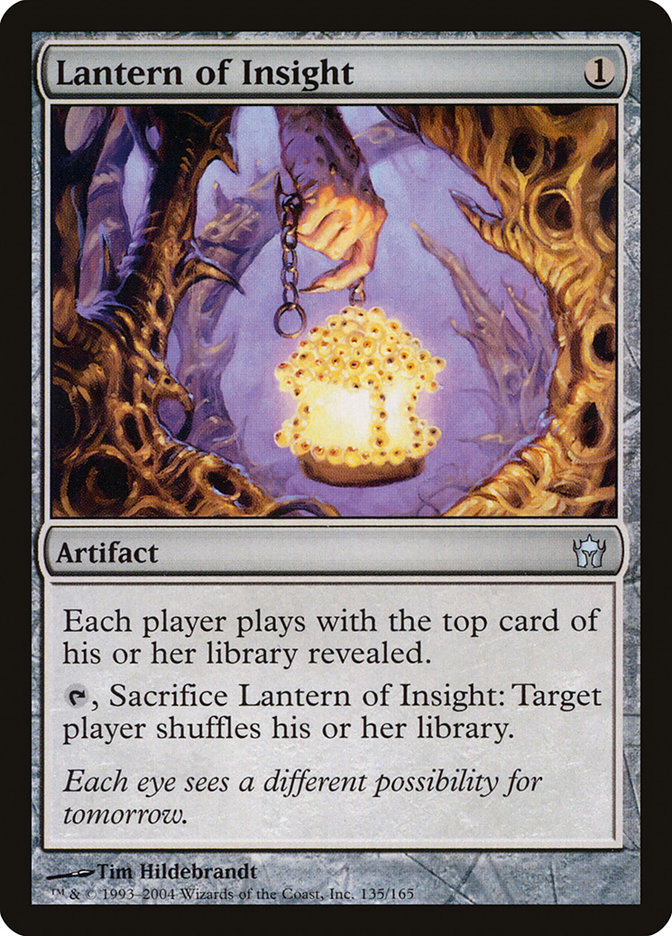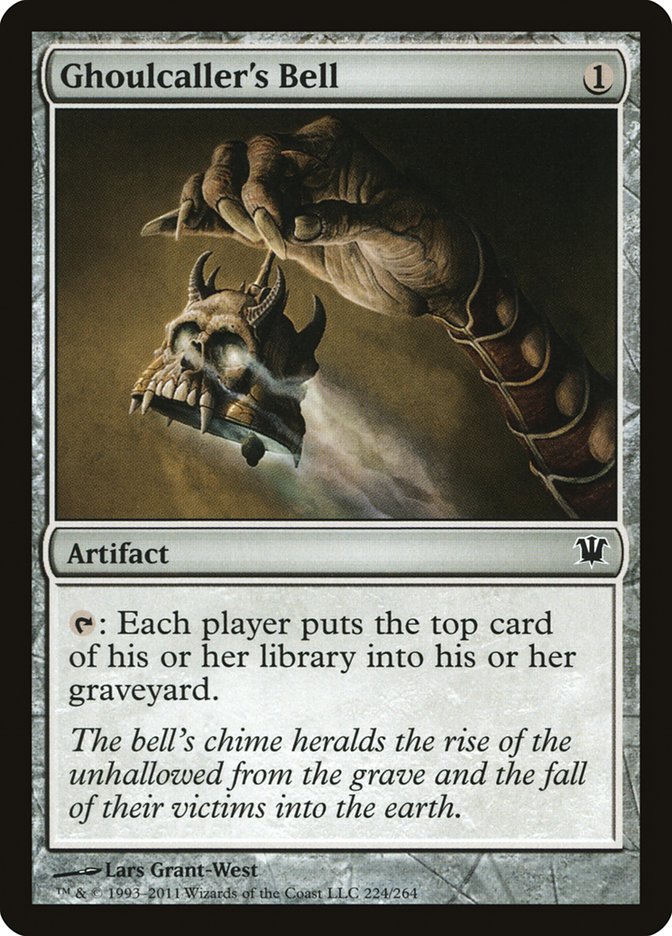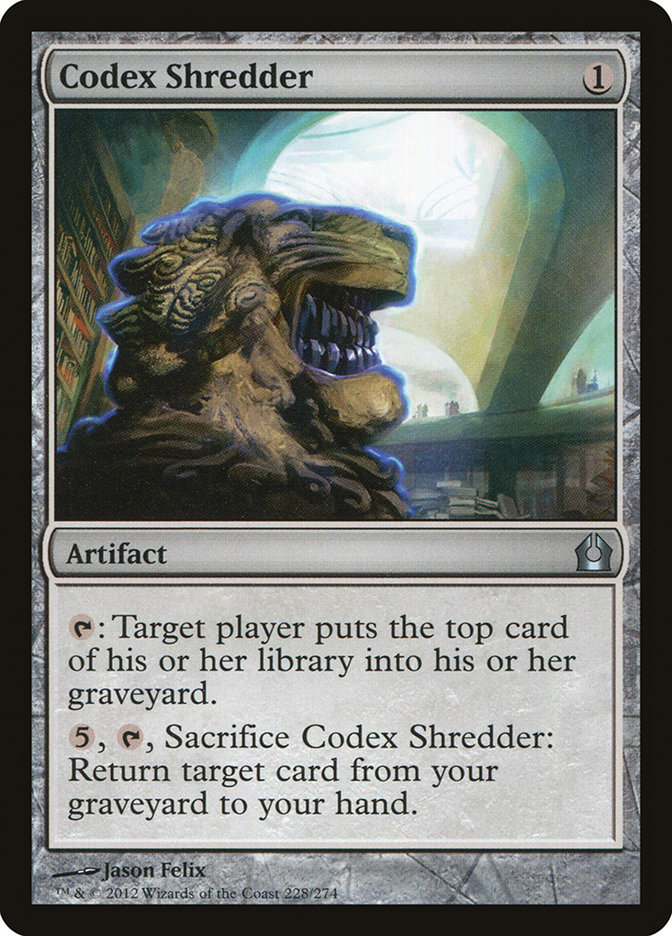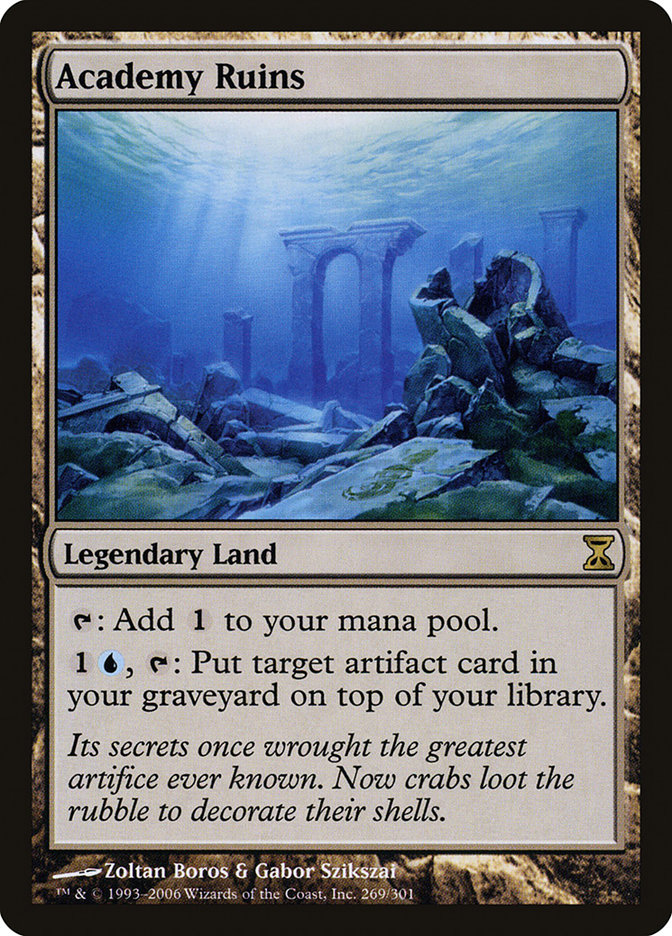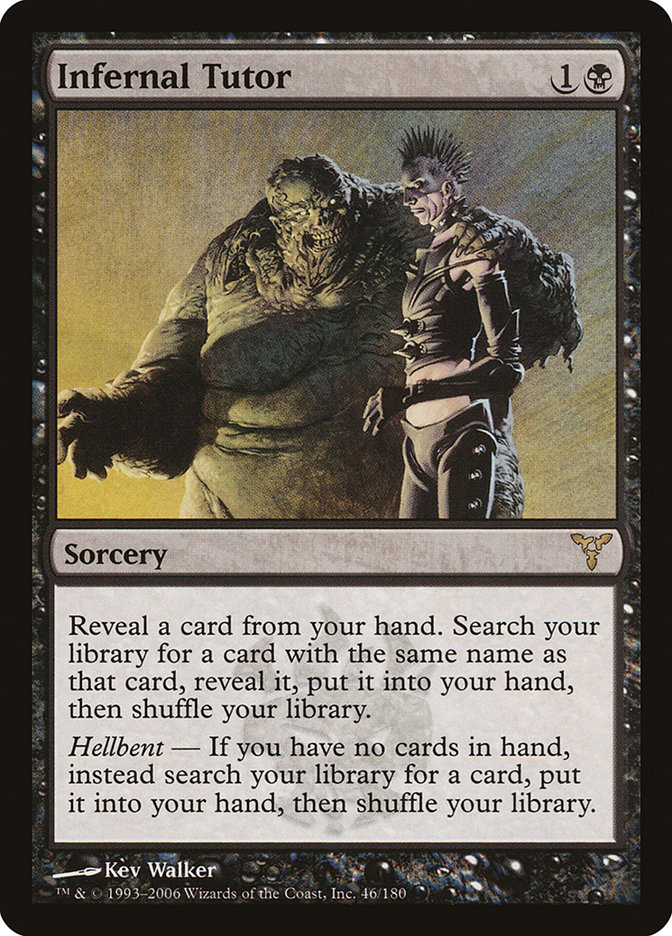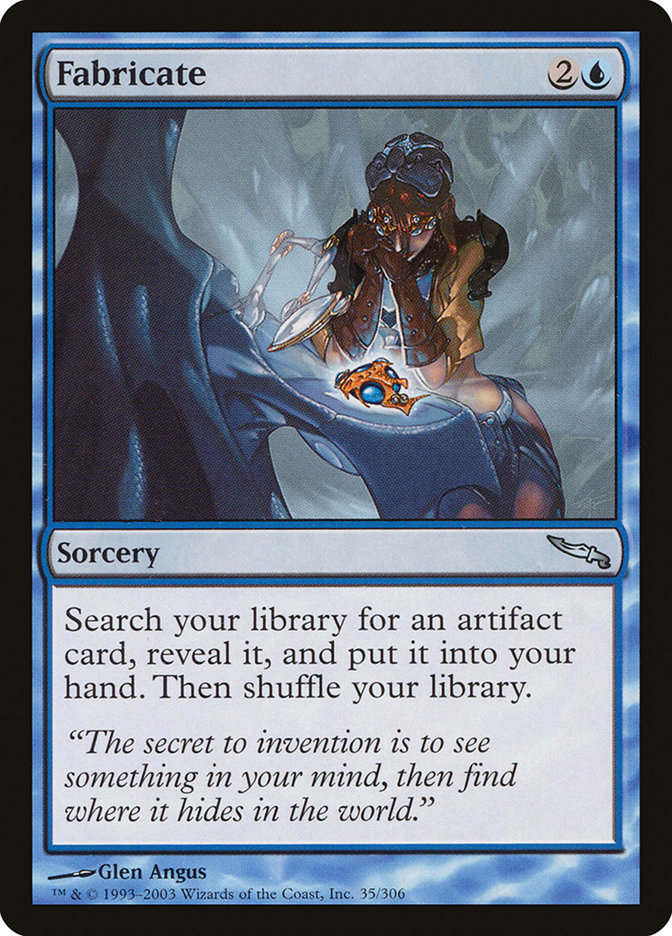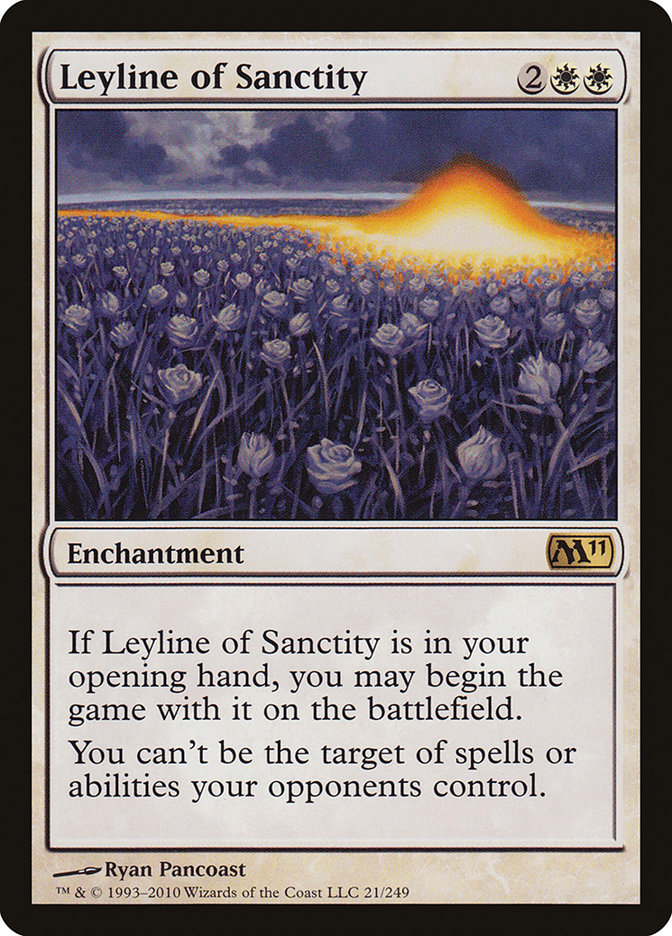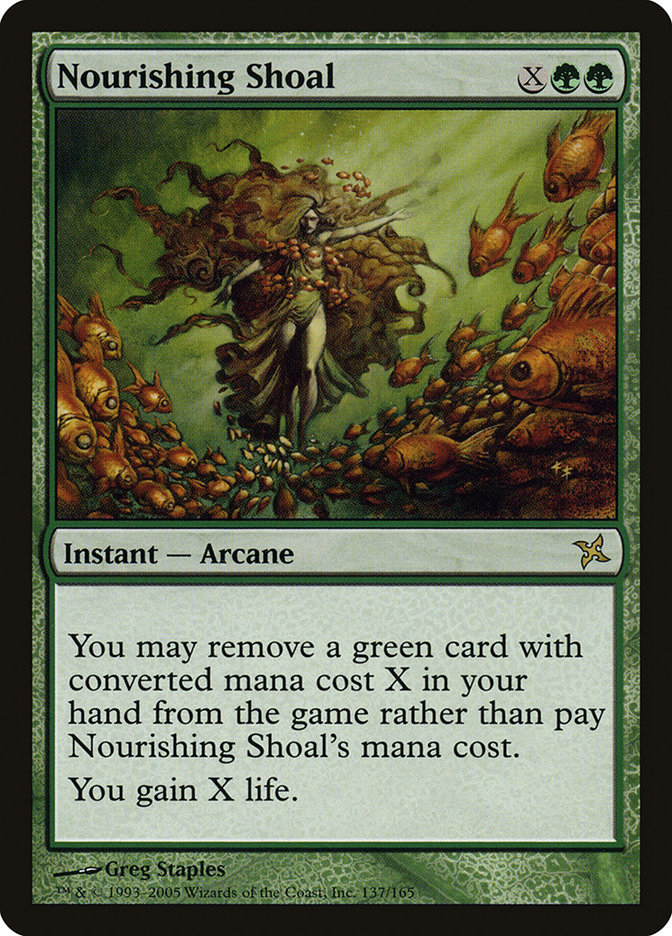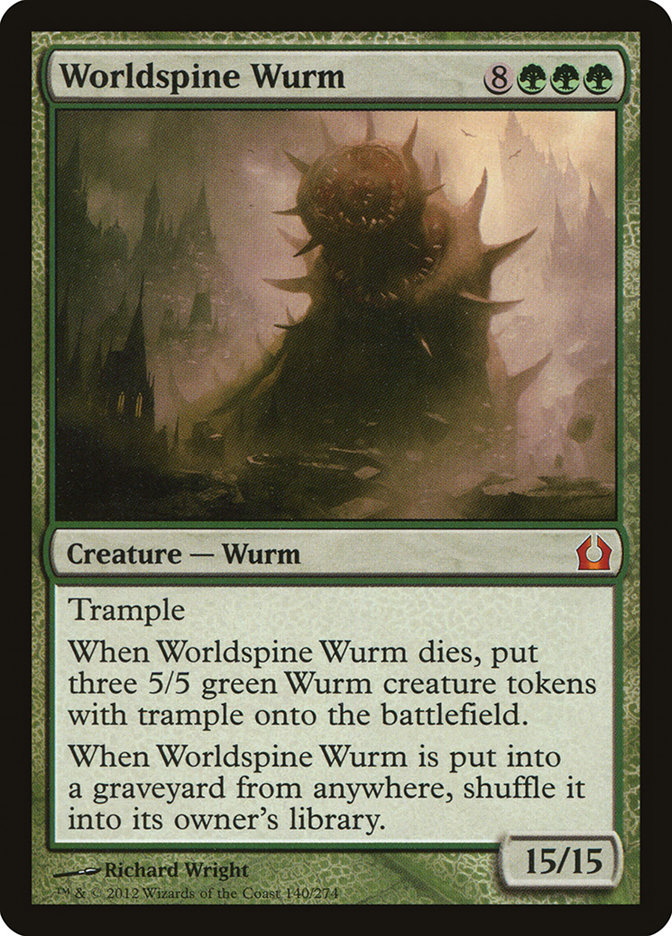Last week, I wrote an article proposing a fairly radical change to the Modern format. The idea was to get rid of Eighth and Ninth Edition, since nothing “good” comes from those sets. Alternatively, they could also unban a lot of stuff to balance out the power of the format. It was more of a thought experiment than an actual suggestion, since I highly doubt that WotC would ever actually remove those sets, but I still stand by it as a good idea. It wasn’t originally my idea, but I felt like it was something that should at least get some press as something to consider, and I wanted to write about it.
People seemed genuinely split on how to react to it. A lot of people seemed to really like the idea of cutting out some of the more degenerate and un-fun cards and decks from the format. Still others disliked it for a variety of reasons: they like playing those cards, they’re worried about what the format would look like, or they even questioned my motives for writing the piece in the first place.
At any rate, regardless of how you feel about the state of the format or the suggestions I wrote about, the results of the GP last weekend make it unlikely that we will actually see anything banned. I think that’s OK, although I still think Summer Bloom allows for too much degeneracy, but I also think that means that from now on the only thing I’m going to be doing in Modern is playing unfair decks. I don’t think you can play fair and succeed in this format unless you’re playing Thoughtseize, Inquisition of Kozilek, and Liliana of the Veil, and I’d rather just smash.
I want to look at two really awesome decks that sprung up from the GP and then I want to take a look back at Standard. The Season Two Invitational in Columbus and GP Charlotte were both Modern, but that’s basically the end of big Modern events for a while. Now we’re back on Standard again, and I’m going to basically have to relearn that format. The cards are still the same, but Standard is the kind of format where you really have to stay on top of – and preferably be one step ahead of – the metagame.
First, though, let’s take a look at these sweet decks. Both of these decks aim to make your opponent’s life pretty miserable. One is a prison/control deck and the other is a fast combo deck. I can’t say that either deck really ups the fun level of Modern too much, but oh well, that’s just the nature of the format. If that’s what Modern is going to be, might as well just jump on board full-steam.
The first deck is an archetype that’s generally referred to as “Top Control” but lately has picked up the name Lantern Control. “Top Control” is a bit misleading, as it evokes images of Sensei’s Divining Top, but in reality it’s called Top Control because the point of the game-plan is to literally control the top of both your deck and your opponent’s. To be fair, Lantern of Control makes me think about Chromatic Lantern, but we’re actually battling with a slightly less well-known lantern. Lantern of Insight it is!
Creatures (3)
Lands (17)
Spells (40)
- 2 Duress
- 4 Ensnaring Bridge
- 4 Lantern of Insight
- 2 Pyrite Spellbomb
- 3 Pithing Needle
- 4 Ancient Stirrings
- 3 Inquisition of Kozilek
- 3 Mox Opal
- 2 Surgical Extraction
- 3 Gitaxian Probe
- 4 Ghoulcaller's Bell
- 2 Abrupt Decay
- 4 Codex Shredder
Sideboard

Just from looking at the decklist alone, this deck looks like a giant piece of junk. And I’m not talking about Abzan when I say junk. I mean actual trash. This deck looks like a steaming pile of trash.
However, I had the pleasure of watching a few rounds of this deck at the GP, since, you know, I was dead pretty early in the tournament. It was awesome to see this deck in action. Once this deck gets going, it starts to lock the opponent out of the game really fast.
While this deck is called a control deck, it should really be called a prison deck. Generally speaking, prison decks restrict your opponents’ resources in some way. Typically this means preventing them from casting spells, activating abilities, or attacking. While Ensnaring Bridge does prevent attacks, this deck imprisons the opponent in a completely different way than normal. It restricts your opponent’s draw step, preventing them from ever drawing good cards again.
The way the deck functions is that it uses Lantern of Insight so that the top card of both player’s decks is revealed. Then it uses mill artifacts like Ghoulcaller’s Bell and Codex Shredder to mill your opponent anytime they are going to draw a card you care about. Against most decks, you hide behind an Ensnaring Bridge so that none of their creatures can attack you, and you mill them strategically to prevent them from ever finding something to blow up the bridge.
It seems like the deck would be really loose to a lot of different cards. How does it beat Liliana of the Veil? How does it beat Splinter Twin? How does it beat Karn Liberated or Oblivion Stone?
The easy solution is Pithing Needle. Not only is it a cheap artifact that turns on your artifact synergies, but it also serves as an easy answer to problematic permanents like the aforementioned Liliana, Karn, and O-Stone. Spellskite serves as an easy way to protect whichever artifacts matter in the matchup. You can also use Pithing Needle to shut off creatures like Deceiver Exarch and Pestermite, giving you additional game against Twin beyond just Ensnaring Bridge, Spellskite, and Abrupt Decay.
Another sweet thing about the deck is that you can actually use Ghoulcaller’s Bell and Codex Shredder to set up your own draw steps. If you desperately need to find an Ensaring Bridge, these cards let you dig multiple cards deep each turn until you can find it.
How does the deck win? Eventually it mills out the opponent a few cards a turn. It can also use Academy Ruins and Codex Shredder to rebuy cards from the graveyard. If you ever mill over a piece you need, there are ways to find it again. Academy Ruins also helps prevent the deck from ever milling itself out, in case something goes terribly wrong.
Against decks that play cards like Emrakul, the Aeons Torn to prevent themselves from ever being milled out, you can either use Surgical Extraction to get rid of the offending Emrakul and win that way, or you can just set up a loop with Academy Ruins and Pyrite Spellbomb and just plain Noah’s Ark them. You know, give it to them two by two. It may take forty days and forty nights to win that way, but it gets the job done.
Surgical Extraction in general just seems like an amazing card for this style of deck. There are a lot of seemingly bad matchups like Scapeshift that you can just sometimes mize them out with an early Surgical Extraction after a discard effect or a few activations of the ole Ghoulcaller’s Bell. A lot of strategies in Modern hinge on one or two cards, and knocking them out early on in the game can be huge, especially because this deck also generally only cares about the one or two cards in the opponent’s deck that will actually interact with this strategy.
There are a few cards that aren’t in this deck that seem like they could be really good additions. The first is Infernal Tutor or Fabricate. These cards let you tutor up any artifact. When you have a bunch of Ghoulcaller’s Bells and Codex Shredders, this could find your Lantern. When a squadron of hawks are giving you a beatdown the likes of which you didn’t even know existed, you can find that Ensnaring Bridge to shut that down. Infernal Tutor is cheaper to cast, but has the issue of only working when you’re hellbent (which is quite often in this deck, to be fair). Fabricate is more expensive, but can find anything at any time.
The second is sideboarding Leyline of Sanctity. Leyline protects against a lot of cards like discard and burn spells. It also gives the deck game against things like Storm or Goryo’s Vengeance that can win by just dealing absurd amounts of damage to your face with cards like Borborygmos Enraged and Grapeshot that are not constrained by Ensnaring Bridge.
All things told, this deck was not something I had seen before this event, and it looked like a really fun and awesome deck. More than that, it actually seemed good. I can easily see this being something I sleeve up for a future event to see if I can gain just a little more insight into the world of one-mana unplayable artifacts.
Creatures (14)
Lands (19)
Spells (27)
- 4 Nourishing Shoal
- 4 Goryo's Vengeance
- 4 Through the Breach
- 2 Desperate Ritual
- 4 Night's Whisper
- 2 Manamorphose
- 1 Noxious Revival
- 4 Faithless Looting
- 2 Tormenting Voice
Sideboard

The other sweet deck is the Goryo’s Vengeance deck that a bunch of Richmond players like Zach Jesse and Bob Huang battled with. Zach ended up taking it all the way to the Top Eight. We’ve seen Goryo’s Vengeance decks before, but this one seems like a huge upgrade on the other lists.
For one, one of the big issues with Goryo’s Vengeance is that cards like Pestermite and Deceiver Exarch could completely mess up your game just by tapping down your giant monster to prevent it from connecting for damage.
This deck solves that issue pretty neatly. The way the deck works is that it uses Nourishing Shoal along with expensive green cards like Worldspine Wurm and Borborygmos Enraged to gain huge chunks of life. You can use that life to draw even more cards with Griselbrand, which can easily find you another Shoal and another Borborygmos to keep the chain going.
Eventually, you use Simian Spirit Guides and Desperate Rituals to cast a Through the Breach. You can put in Borborygmos Enraged and use Big Borb to throw a bunch of lands at your opponent’s face to kill them. How do you get all those lands? Well, you did probably draw 21 to 28 cards off of Griselbrand. If that isn’t good enough, then what is?
Where the deck really starts to get awesome is when you consider some of the other sick synergies. Nourishing Shoal, Desperate Ritual, Through the Breach, and Goryo’s Vengeance are all Arcane Spells. That means you get to do some sweet things with Splice.
One easy thing you can do is Splice a Through the Breach onto a Nourishing Shoal. That lets you play Through the Breach a full turn earlier than you normally would, since the splice cost on Through the Breach is actually cheaper than the normal cost. You can also keep your Through the Breach for a future turn or even later in the same turn if you’re going for the kill.
You can also splice Desperate Ritual onto other Desperate Rituals or Goryo’s Vengeance or even a Nourishing Shoal to produce a lot of mana to fuel later Through the Breaches to put in other giant monsters like Borborygmos.
This isn’t even considering the normal game-plan of the deck, which is just using cards like Faithless Looting and Tormenting Voice to throw Griselbrand into your graveyard so you can cheaply bring it back with Goryo’s Vengeance and just kill them that way. Hit them for seven, gain seven, and set up future turns. You can also just Through the Breach in a Worldspine Wurm to hit them for fifteen and get three 5/5s for the next turn to kill them with. Or you can do it with Borborygmos, and just hope to hit some lands to finish the job! Okay, that last one sounded less good, but it is a thing you can do! Game!
I think this deck making Top Eight at the GP was not a fluke. It seems really awesome and powerful. It can win at instant speed and without using the combat step. It can win as early as turn two. People are getting better and better at building these degenerate decks to be faster, more consistent, and stronger at executing their game-plan to the point where it is harder and harder to beat these decks and more and more enticing to just join them.
Looking Back At Standard
I’ve spent the last roughly three to four weeks just jamming a lot of games of Modern. As a result, my Standard game has fallen by the wayside a bit. That being said, GP Providence and SCG Indianapolis this weekend are both Standard and therefore it’s time for me to get back into the Standard groove.
A full half of the Top Eight of the Season Two Invitational was G/R Devotion. At this point, I think it’s safe to say that G/R Devotion is the deck to beat. Magic players are smart. They adapt. I’ve already started to see it on Magic Online where decks like Esper Dragons are becoming extremely popular choices to fight the G/R Devotion decks.
This week, I think it’s important to bring a deck to the table that has game against both G/R Devotion and Esper Dragons. For me, that is likely going to be an updated version of Abzan Aggro.
Shocking, I know.
The format looks a lot like it did around the time of the last Pro Tour. As a result, I’ve moved back to an Abzan Aggro list that also kind of mirrors what our deck looked like at the Pro Tour. That means one thing, and one thing only.
Nasty. Surraksty. [CEDitor’s Note: Please, God, not again…]
I am literally wearing a Nasty Surraksty shirt as I write this article and I have to say that I’m really proud of every life decision I’ve made to get to this point. Nothing can take me off this cloud nine, except for maybe a cloud ninth place.
Surrak was a card that was really good in Abzan Aggro in a field with a bunch of Devotion decks and Stormbreath Dragon decks. It provides a fast clock that allows you to successfully race them, and these decks rarely have a way to actually kill Surrak. The metagame is starting to look a lot like that again with a variety of Thunderbreak Regent and Stormbreath Dragon decks along with G/R Devotion. Surrak is weak against Esper Dragons, but we can address that deck in other ways.
The main way to fight Esper Dragons is by maximizing the number of maindeck Thoughtseizes. I want to have a proactive game-plan with Thoughtseize so that I can steal games from Esper Dragons in game one, even though I’m going to have a lot of dead cards like Dromoka’s Command in those games.
Being proactive with Thoughtseize is rarely a wrong place to be. Our Pro Tour deck was poorly positioned against Esper Dragons, but that’s mostly because Esper Dragons didn’t really exist and we weren’t playing a full set of Thoughtseize or cards like Duress to really combat it.
Now I am maximizing on discard, and experience allows us to better understand how to approach the matchup. I have cards like Self-Inflicted Wound to punish Dragonlord Ojutai while it is untapped. While I still have some stinkers in the maindeck, I think this version of Abzan Aggro has game against Esper Dragons.
Now that I’ve spent a good bit of time talking about the deck, how about the actual list?
Creatures (20)
- 4 Fleecemane Lion
- 4 Anafenza, the Foremost
- 4 Rakshasa Deathdealer
- 4 Siege Rhino
- 2 Warden of the First Tree
- 2 Surrak, the Hunt Caller
Lands (26)
Spells (14)

I wasn’t able to test this list as much as I would have liked this week, so it’s possible that I will simply bust out with it. On the other hand, I enjoy playing Abzan Aggro and the deck is super powerful and proactive, so who knows. Maybe it’ll work out for me. At the very least, I get to cast some Siege Rhinos, so it sounds like a weekend well spent regardless of the end result.

